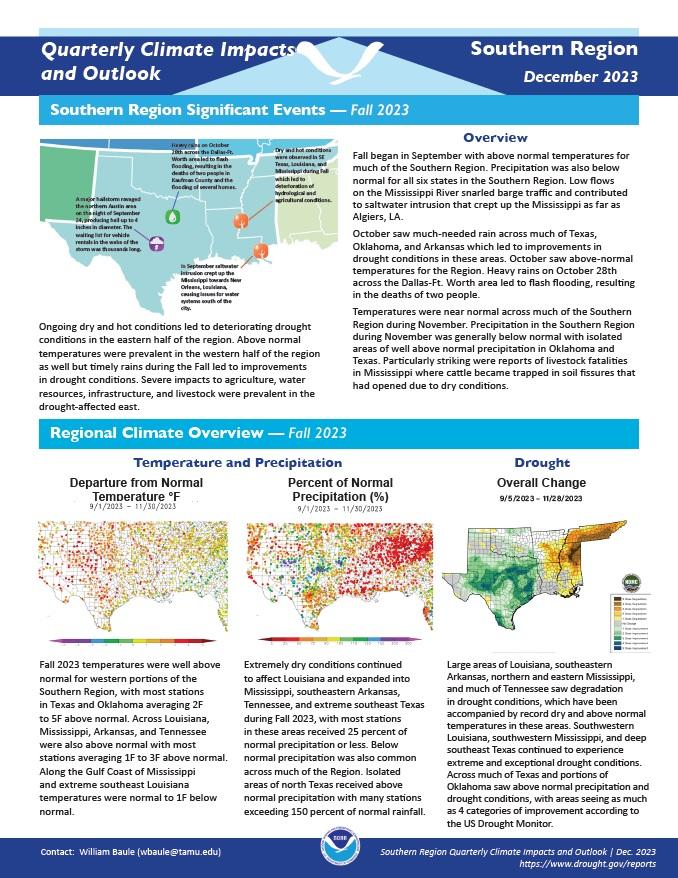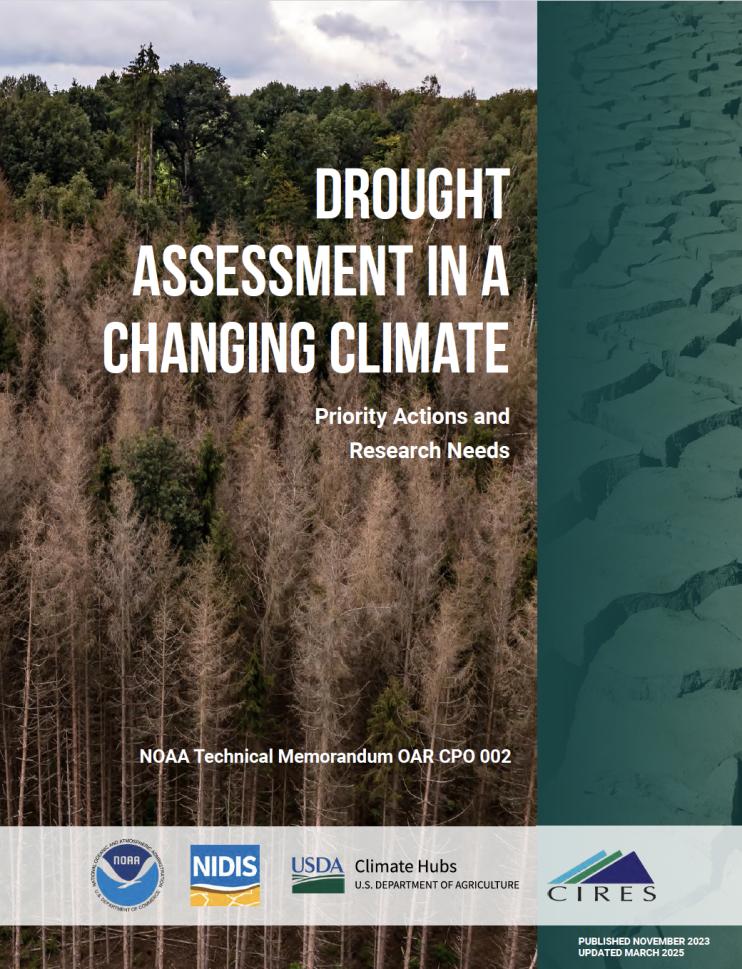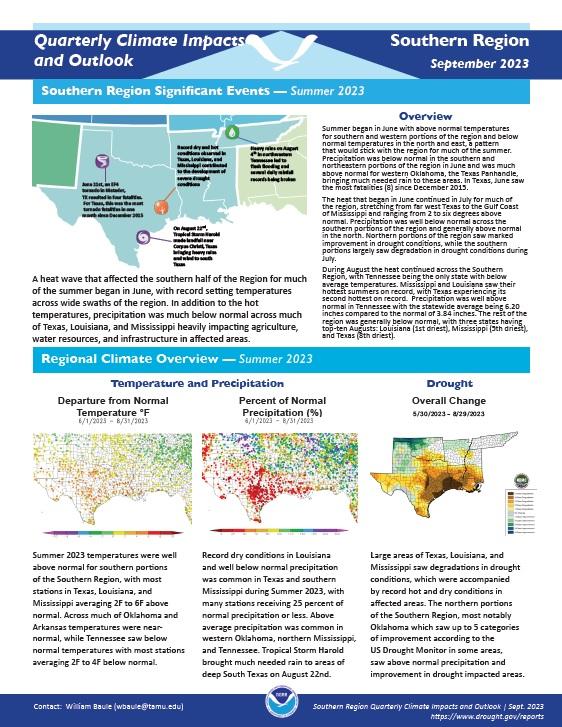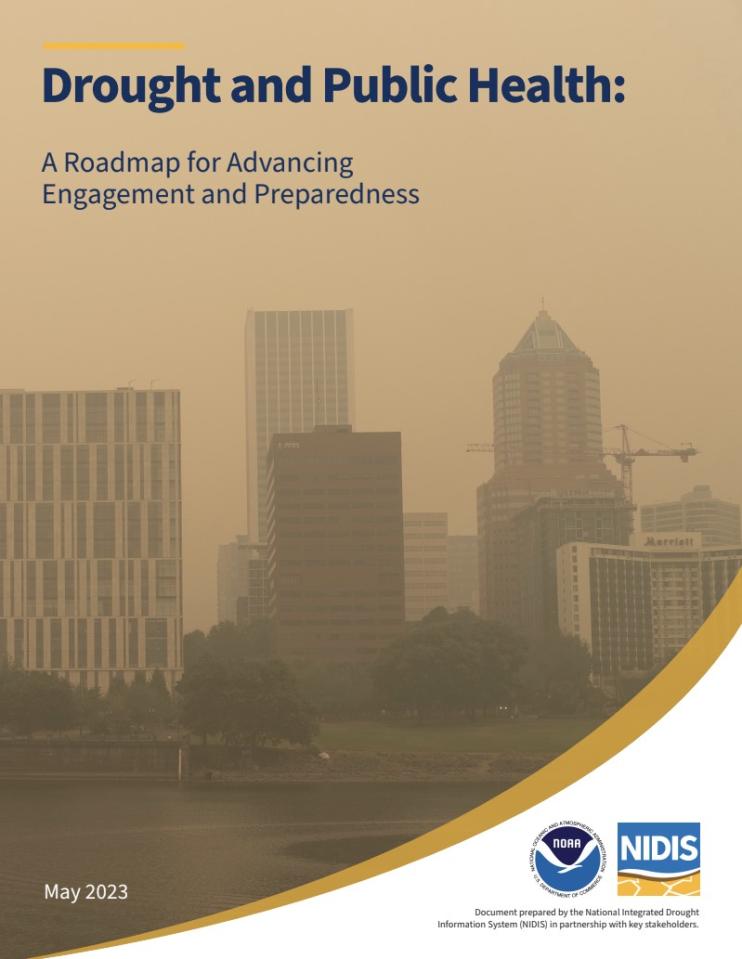Quarterly Climate Impacts and Outlook for the Southern Region for September–November 2023. Dated December 2023.
In a changing climate, the intensity, duration, and frequency of droughts may change. This poses new challenges for drought assessment. Current methods for assessing drought conditions do not consistently and deliberately consider drought in the context of climate change, thereby unintentionally promoting drought response strategies that are limited in building long-term resilience in a changing climate.
Quarterly Climate Impacts and Outlook for the Southern Region for June–August 2023. Dated September 2023.
Quarterly Climate Impacts and Outlook for the Southern Region for March–May 2023. Dated June 2023.
Spring temperatures were near normal across much of the Southern Region, with most stations averaging 1°F below to 1°F above normal. Along the Gulf Coast, temperatures at many stations were 1°F to 3°F above normal. Below-normal precipitation was common in central Oklahoma, northeastern Texas, the area north and west of San Antonio, far west Texas, eastern Tennessee, and much of Louisiana, with many stations receiving 25% to 70% of normal precipitation.
Drought is one of the costliest and deadliest climate-related disasters in the United States, necessitating public health engagement at a national level. Although drought is not typically thought of as a health hazard, the pathways to human health outcomes are prevalent and numerous. To better understand these pathways, and actions that could be taken to reduce health impacts associated with drought, NOAA’s National Integrated Drought Information System (NIDIS) supported the first comprehensive assessment of drought and health.







